|
John Tyman's Cultures in Context Series NEPAL |
|
|
|
161-189 |
|
John Tyman's Cultures in Context Series NEPAL |
|
|
|
161-189 |
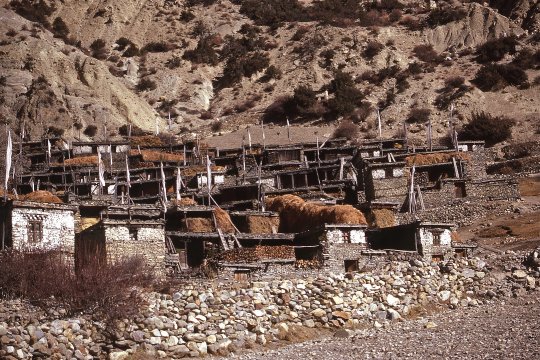 |
| 162. In recent decades its population has typically numbered between 300 and 400 people, in close to 100 families: but it has fluctuated as people have sought employment elsewhere. |
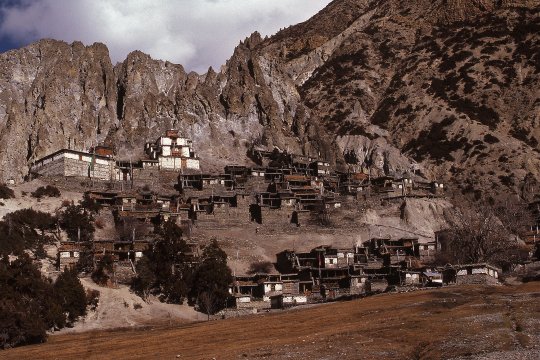 |
| 163. It is located on the north side of the valley, since this gets the most sunlight and the least snow in winter. |
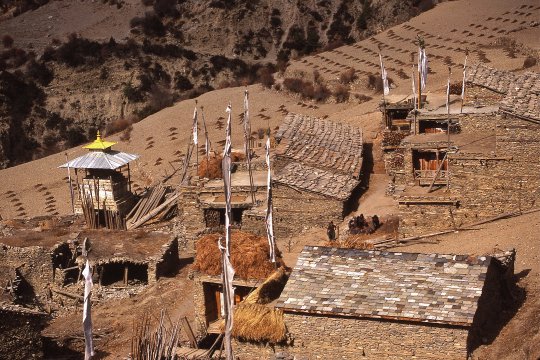 |
| 164. Accordingly, cultivation is largely confined to terraced slopes above and beside the town. The fields in the background are being manured prior to winter. |
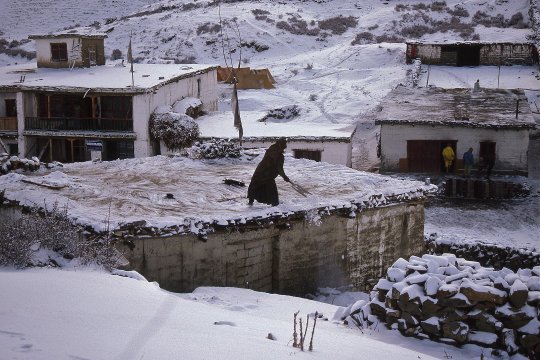 |
| 166. In winter, though, the weight of the snow can be a problem: and it also diminishes the usefulness of a flat surface. |
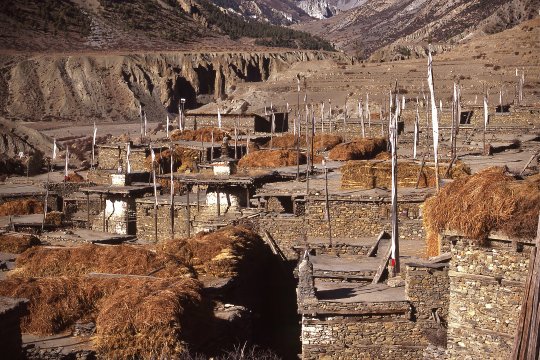 |
| 168. Thirdly there's the roof terrace, part of which is sometimes enclosed so that fodder once dried in the open section can be stored under cover. |
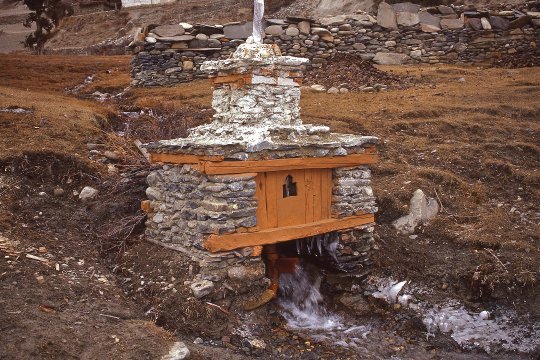 |
| 169. In neighbouring villages small streams/rivulets have been diverted and/or harnessed to turn water wheels used to grind local grain. |
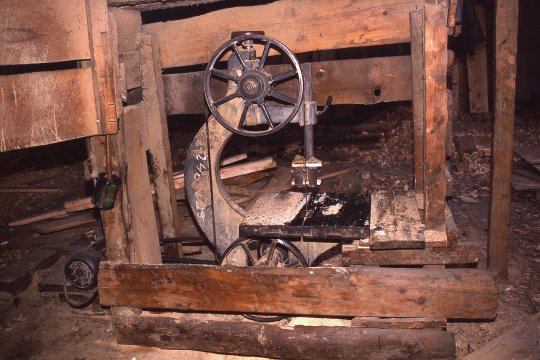 |
| 170. And for many years Manang has obtained electricity from a small hydro-electric generator. This is used to power the local sawmill. |
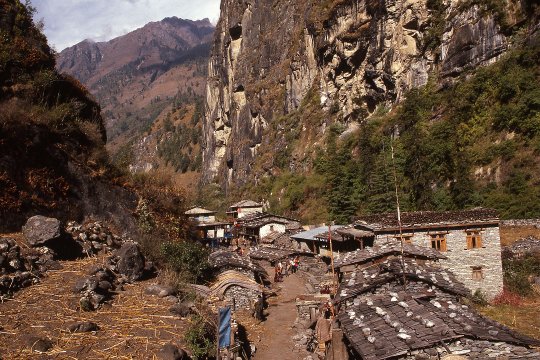 |
| 173. In places the corridors leading to Manang are reduced to narrow defiles with little room for homes and gardens. (Bagarchhap) |
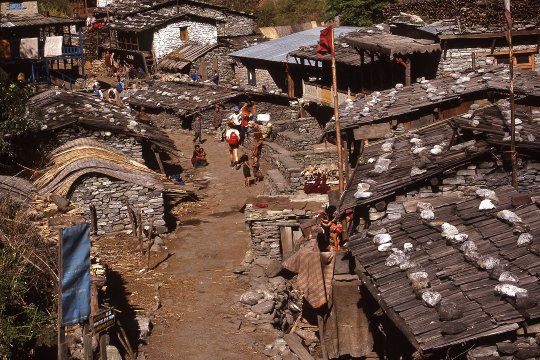 |
| 174. On the lower reaches of the Marsyangdi forests provide wood for roofing, but with strong winds the shingles are held in place by rocks. |
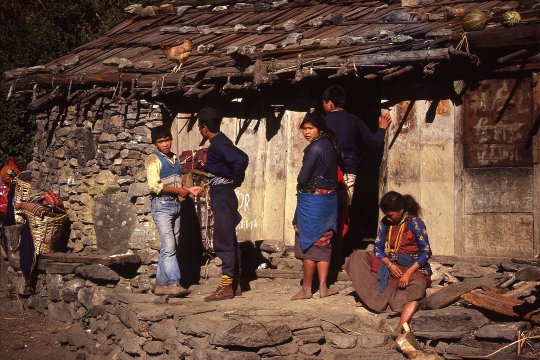 |
| 175. The tourist industry here offers employment and income to the fortunate few but no one living in the high country has an easy life. (Porters outside tea house) |
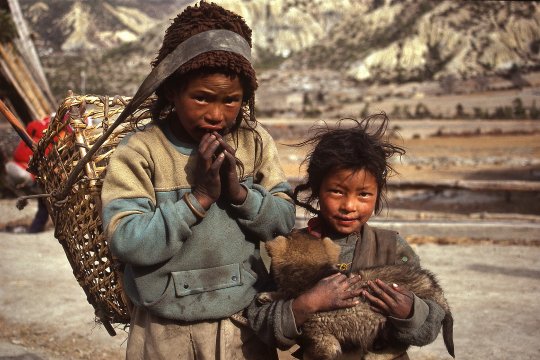 |
| 177. However, most people live in abject poverty (by Western standards) and the luckiest kids are those clothed in the second-hand caste-offs of very much richer visitors. |
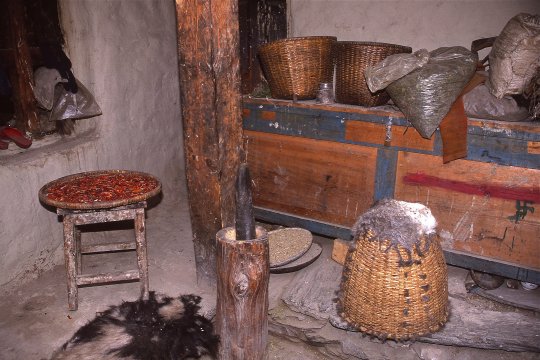 |
| 178. The interiors of houses at Manang are devoid of frills -- in this case just containers to transport, dry and store produce. |
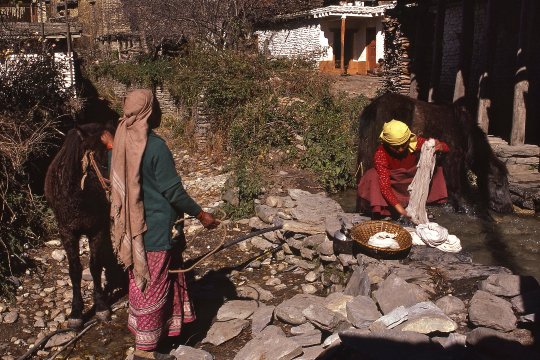 |
| 180. Women do their laundry here in the ice-cold water of streams supplied by the melting of ice and snow on the slopes above. (At Larjung) |
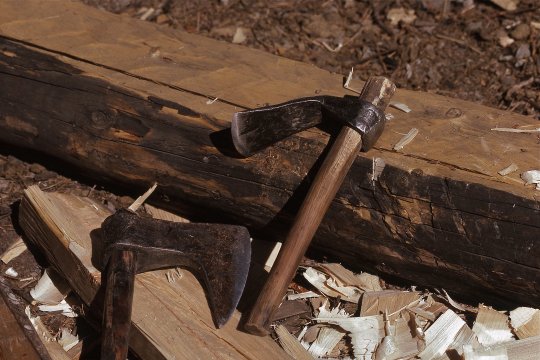 |
| 182. In most villages heavy timbers are still shaped using a broad axe and an adze. (Near Chame) |
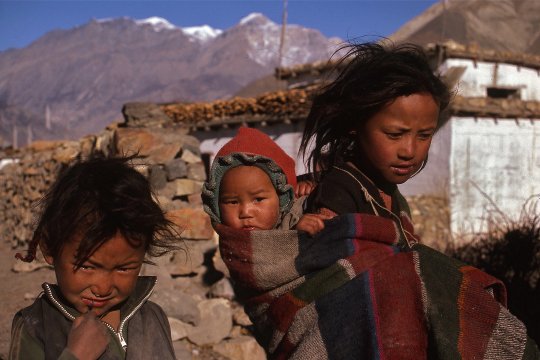 |
| 183. Educational opportunities are limited, and many parents will not allow their children to attend school because there is work for them to do at home. (Near Muktinath) |
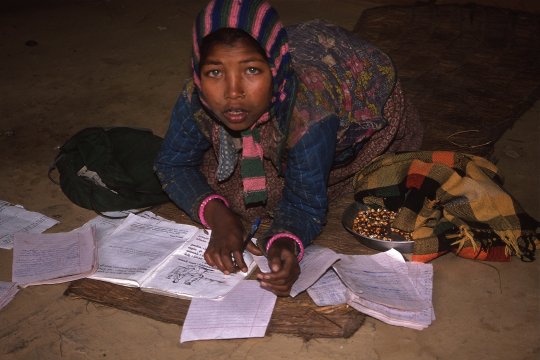 |
| 184.Those that do get to attend school will, without electric light, have problems finishing their homework in time. (In Tatopani) |
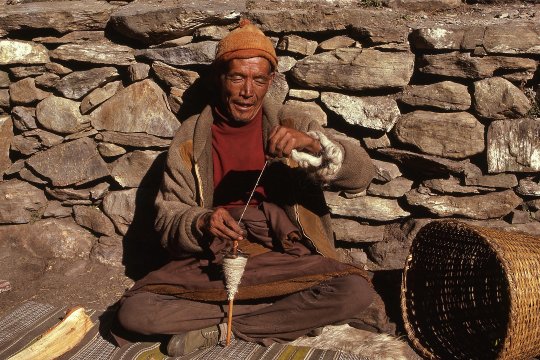 |
| 185. Wool has long been processed here to produce warm clothing as protection against the cold. The techniques used are common to traditional societies worldwide. (Near Manang) |
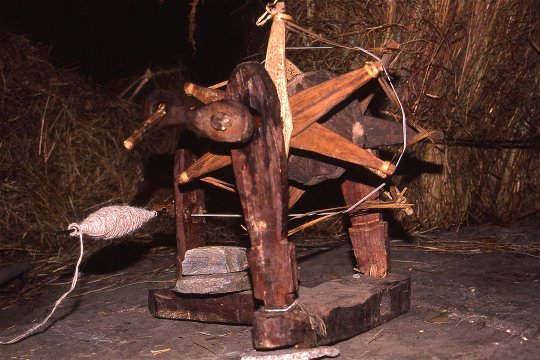 |
| 186. The equipment they use is made locally but very similar techniques are used in other countries. (Near Kalopani) |
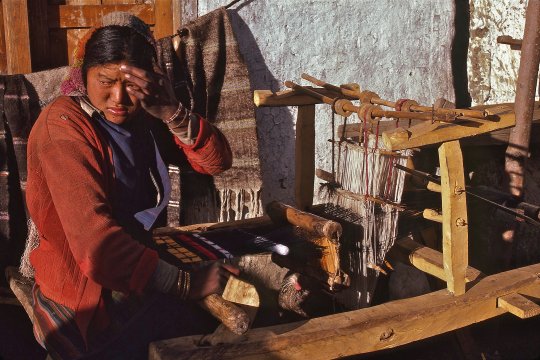 |
| 187. Looms like this can be seen in most villages; but many of them, instead of being used to make clothes, now produce carpets and decorative woollen goods. (At Muktinath) |
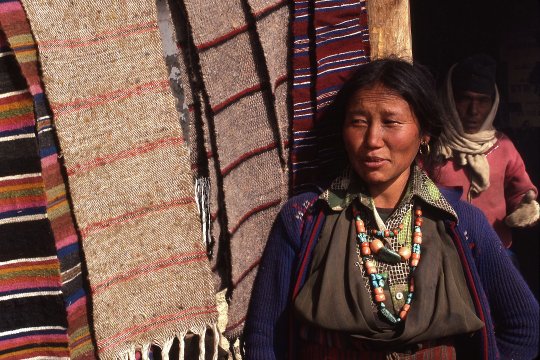 |
| 188. These are sold to passing tourists outside lodges and tea houses, and to pilgrims visiting the shrines at Muktinath. |

![]()
Text, photos and recordings
by John Tyman
Intended for Educational Use
Only.
Contact Dr. John Tyman at johntyman2@gmail.com
for more information regarding
licensing.
![]()
www.hillmanweb.com
Photo processing, Web page layout,
formatting and hosting by
William
Hillman ~ Brandon, Manitoba ~ Canada